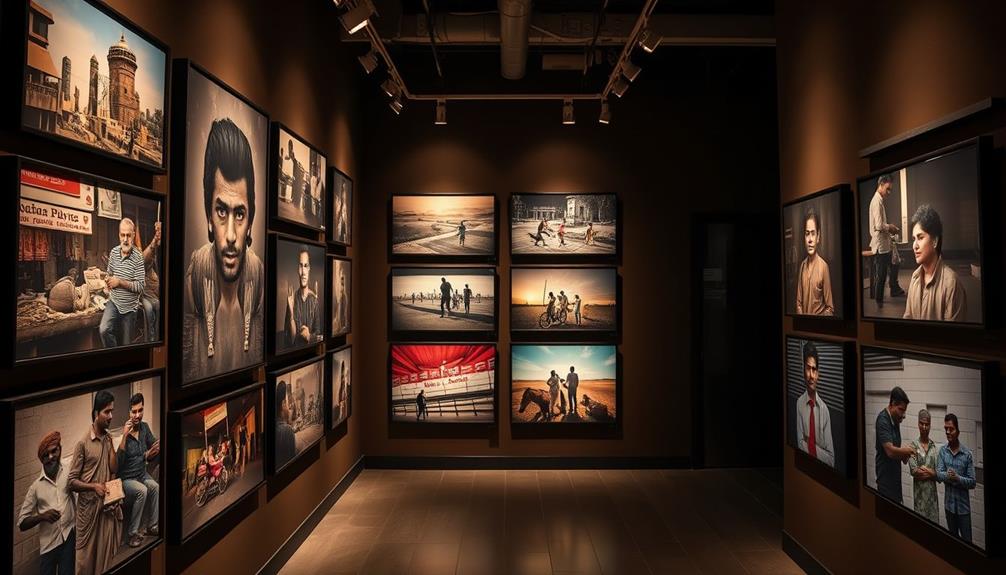The Bombay Progressive Artists Group, a pioneering collective led by visionaries like Francis Newton Souza and Tyeb Mehta, reshaped Indian art, challenging norms and sparking a radical shift. Their bold fusion of Indian themes with modernist influences redefined artistic boundaries, garnering global recognition and inspiring a new wave of creativity. By breaking barriers and fostering cultural dialogue, these rebellious artists left an indelible mark on the art scene, setting the stage for a transformative era in Indian art history. Their impact continues to echo through the vibrant canvas of contemporary Indian art, shaping its essence for generations to come.
Key Takeaways
- Progressive Artists Group reshaped Indian art scene by defying norms.
- Interaction with Western ideas sparked radical transformation in Indian art.
- Kerala Radicals critiqued commercialization and traditional art forms.
- Collective efforts challenged stereotypes and revolutionized artistic landscape.
- Struggles faced by Radical Group highlight challenges in fostering artistic innovation.
The Pioneering Spirit of Raja Ravi Varma
Raja Ravi Varma, hailed as the Father of Indian Modern Art, embodied a pioneering spirit that revolutionized the Indian art landscape. His focus on religious themes and distinctive style not only set him apart in the Indian art scene but also left a lasting impact on the trajectory of Indian art.
Varma gained fame for his portraits and his exceptional depiction of South Indian women, showcasing a blend of Western techniques with Indian themes that resonated with audiences worldwide.
Varma's innovative approach to artistry challenged traditional norms, paving the way for a new era in Indian art. His ability to capture the essence of Indian culture through a modern lens captivated art enthusiasts and scholars alike. By seamlessly blending Western realism with Indian mythological narratives, Varma created a unique artistic language that continues to inspire contemporary artists.
His legacy as a trailblazer in Indian art remains unparalleled, solidifying his status as a visionary whose influence transcends time.
Amrita Sher-Gil: Redefining Indian Art
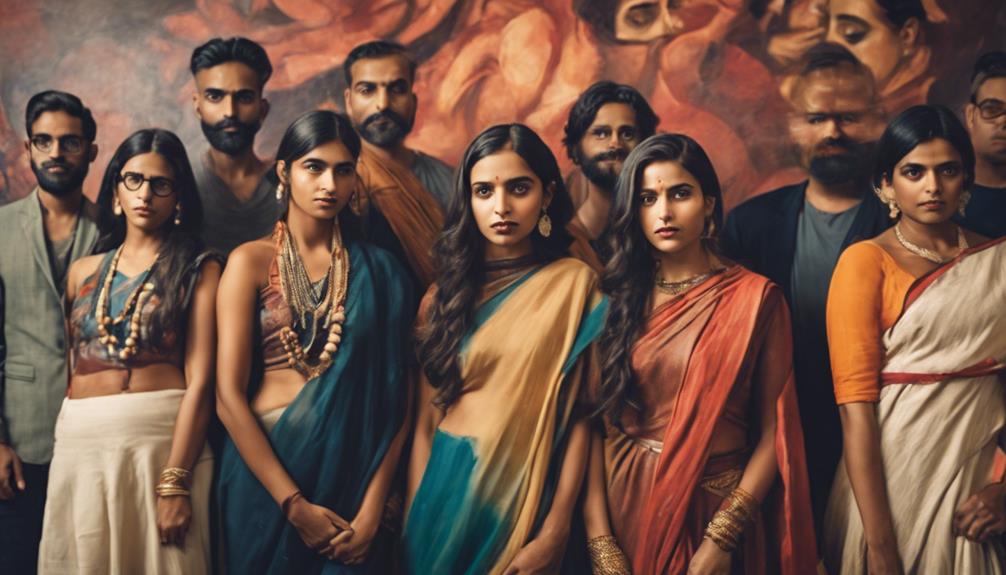
Amrita Sher-Gil, a trailblazing modern Indian artist born in Budapest in 1913, redefined the Indian art landscape by skillfully blending Western and Eastern art styles. Her unique approach to artistry captivated audiences and critics alike, showcasing a deep understanding of both cultural influences. Here is a table summarizing key aspects of Amrita Sher-Gil's contributions to Indian art:
| Aspect | Description |
|---|---|
| Cultural Fusion | Blended Western techniques with Indian themes, creating a new artistic language. |
| Award-Winning Art | First Asian woman to win a gold medal in Paris for her impactful portrayal of Indian villagers. |
| Rural Life Focus | Art depicted the vibrancy and struggles of rural Indian life, offering a fresh perspective. |
| Bridging Traditions | Connected traditional Indian art with modern Western influences, revolutionizing Indian art. |
| Lasting Legacy | Continues to inspire contemporary Indian artists, highlighting the richness of Indian narratives. |
Amrita Sher-Gil's legacy endures as a beacon for Indian artists, showcasing the beauty and complexity of Indian culture through her groundbreaking works.
V.S. Gaitonde's Abstract Revolution
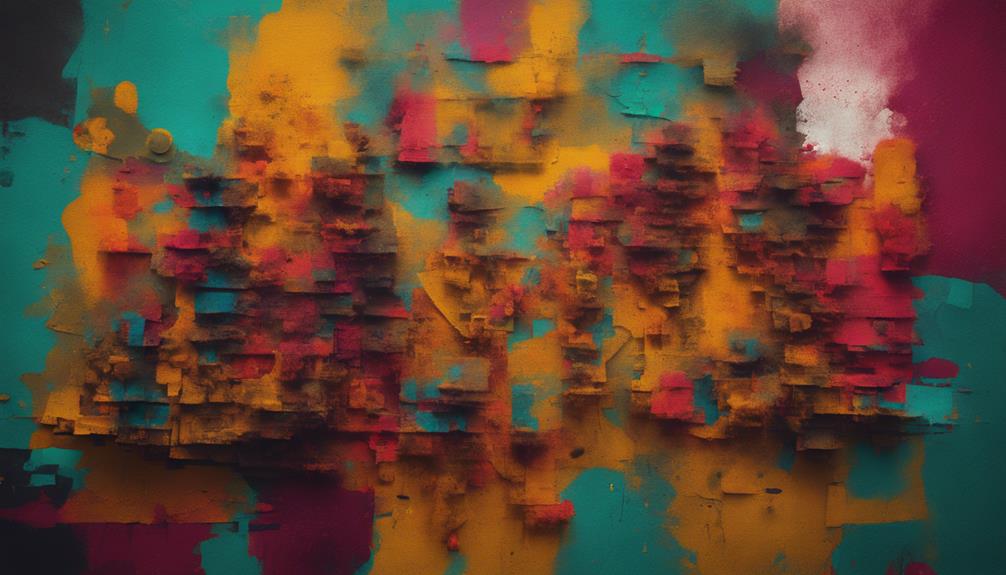
V.S. Gaitonde's abstract revolution in Indian art challenged conventional norms and embraced a unique blend of Eastern philosophy and modernist trends. As a member of the Progressive Artists Group, Gaitonde's minimalist lifestyle influenced by Zen Buddhism translated into his artwork, leaving a lasting impact on the art world.
His paintings, characterized by intricate details, subtle colors, and a profound sense of tranquility, reflected his deep contemplation and spiritual exploration.
Gaitonde's abstract art defied traditional norms, paving the way for a new wave of artistic expression in India. His focus on inner experience set him apart from his contemporaries, establishing him as a pioneering figure in Indian abstract art.
The influence of Eastern philosophy and modernist trends in Gaitonde's work created a harmonious fusion of cultural elements. Gaitonde's artworks, known for their meditative quality, continue to captivate audiences and inspire contemporary artists.
His legacy lives on through the enduring impact and relevance of his abstract revolution in the Indian art scene.
S.H. Raza: Bridging Cultures Through Art

A founding member of the Progressive Artists Group in India, S.H. Raza played a pivotal role in bridging Indian and Western artistic traditions through his unique approach to art. Raza's art was characterized by the incorporation of the Bindu concept, symbolizing energy and creation in his abstract pieces.
His artistic journey evolved from early influences of Indian landscapes to geometric abstraction, reflecting a profound spiritual connection. As Raza explored various art forms, he garnered global recognition for blending Indian philosophy with modernist principles.
Through his work, Raza aimed to foster a cultural dialogue, emphasizing the harmony between Indian heritage and contemporary artistic expressions. His artistry not only showcased his creativity but also served as a bridge between diverse cultural influences, leaving a lasting impact on the art world by promoting a synthesis of different artistic traditions.
Tyeb Mehta's Iconic Canvas

S.H. Raza's pioneering efforts in blending Indian and Western artistic traditions paved the way for Tyeb Mehta to make his mark with an iconic canvas that redefined Indian art. Tyeb Mehta co-founded the Bombay Progressive Artists Group, leading a revolutionary art movement in post-independence India.
His masterpiece 'Celebration' shattered records, fetching over $1.5 million at auction. Mehta's style seamlessly integrated Indian themes with modernist influences, garnering him global recognition. The bold colors and dynamic compositions in his works vividly captured the complexities of human emotions and existential struggles.
Tyeb Mehta's artistic legacy remains a guiding light for contemporary Indian artists and art enthusiasts worldwide.
- Mehta's 'Celebration' auctioned for $1.5 million, showcasing his artistic prowess.
- His fusion of Indian themes with modernist influences redefined Indian art.
- The bold use of color in Mehta's works reflects deep exploration of human emotions.
- 'Celebration' by Mehta is a reflection of his iconic status in the art world.
- Tyeb Mehta continues to inspire artists globally with his revolutionary approach.
Ram Kumar: Capturing the Essence of India

Ram Kumar, a renowned Indian artist, skillfully captured the essence of Indian culture in his paintings. His unique artistic vision, influenced by his studies in Paris and traditional Indian elements, left a significant impact on the Indian art scene.
Through his work, Ram Kumar showcased both the simplicity and complexities of Indian life, earning him prestigious awards for his contributions to the art world.
Essence of Indian Culture
Capturing the essence of India through his art, Ram Kumar, a Padmashree and Padma Bhushan awardee, depicted the fusion of traditional Indian techniques with modern artistic elements. His artwork served as a bridge between the rich heritage of Indian art and contemporary expressions.
To visualize his impact, imagine:
- Miniature paintings coming to life on large canvases, blending intricate details with bold strokes.
- Vibrant colors dancing across the canvas, reminiscent of the diverse cultural tapestry of India.
- Rural landscapes portrayed with a minimalist elegance, evoking a sense of tranquility and timelessness.
- Mythological figures depicted in a modern light, showcasing a harmonious blend of tradition and innovation.
- Layers of history and tradition interwoven with modern interpretations, inviting viewers to explore further into the soul of India.
Ram Kumar's artistic legacy not only captures the essence of Indian culture but also celebrates its evolution through the lens of a visionary artist.
Influences on Art
Influences on Ram Kumar's art, reflecting the essence of India, encompass a unique blend of abstract and figurative styles.
Kumar's artistic journey was notably shaped by his time studying under renowned artists in Paris. This exposure to diverse artistic styles and techniques in the vibrant art scene of Paris played a pivotal role in influencing his artistic vision and approach.
Through this experience, Kumar was able to refine his skills and develop a distinctive style that seamlessly merged elements of abstraction with figurative art.
Artistic Visionaries' Impact
Renowned for his distinct artistic vision that vividly portrayed the essence of India, Ram Kumar's impact on the Indian art scene was profound and lasting.
Shifting from a banking job to pursue art, Kumar studied under renowned artists in Paris before returning to India to create masterpieces that resonated deeply with viewers. His minimalist style and use of color reflected a deep connection to the Indian landscape and its people, capturing both the beauty and struggles of Indian life.
Despite embarking on his artistic journey at a young age, Kumar's work quickly gained recognition, earning him prestigious accolades such as the Padmashree and Padma Bhushan awards.
Hailing from a princely state, Kumar's art offered a unique perspective on the cultural and societal fabric of India, leaving an indelible mark on the country's artistic legacy.
Francis Newton Souza's Avant-Garde Vision
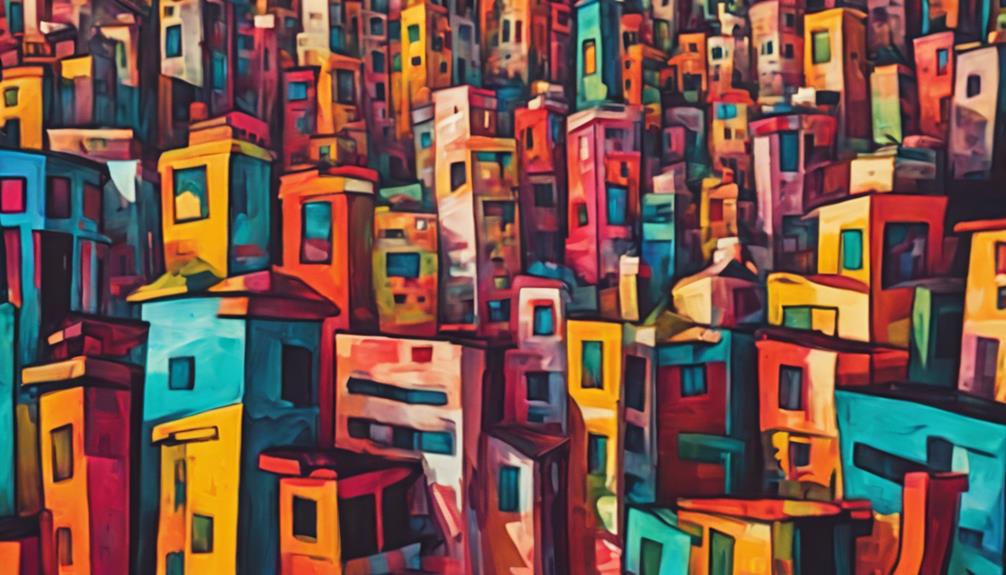
Francis Newton Souza's avant-garde vision profoundly reshaped the landscape of Indian art in the post-independence era. As a co-founder of the Bombay Progressive Artists Group, Souza played a pivotal role in revolutionizing Indian art by introducing unconventional and provocative themes.
His paintings, characterized by their avant-garde nature and often disturbing imagery, challenged traditional norms and captivated audiences both in India and abroad. After relocating to London in 1949, Souza became the first Indian artist to exhibit in the West, further expanding his influence globally.
Souza's works frequently featured Christian themes and nudes, reflecting his unique artistic perspective. This distinctive style not only made a significant impact on the European art community but also inspired a new generation of artists in India.
Today, Souza's avant-garde vision and contributions to modern Indian art continue to be celebrated, serving as a source of inspiration for artists and art enthusiasts worldwide.
M.F. Husain: The Picasso of India
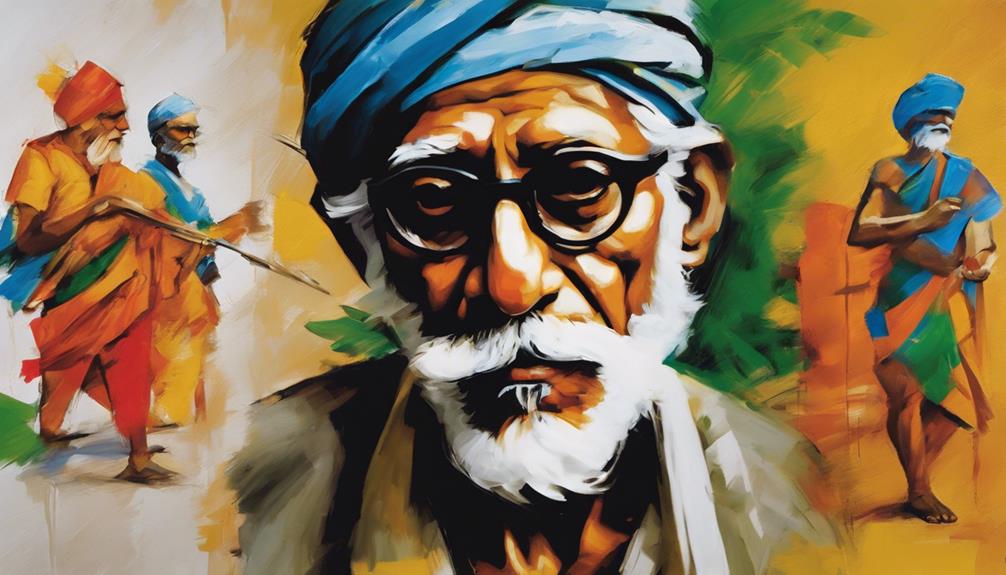
M.F. Husain, hailed as the 'Picasso of India' for his diverse artistic expressions, was a self-taught painter born in Pandarpur, India in 1915. His contributions to the Indian art scene through the Bombay Progressive Artists Group left a deep impact, influencing generations of artists.
- Husain's art drew inspiration from Indian mythology, vividly depicting tales from the Ramayana and Mahabharata.
- His unique style, a blend of Indian traditions and global art movements, challenged conventions and captivated audiences worldwide.
- Co-founding the Bombay Progressive Artists Group, Husain played a pivotal role in shaping the School of Art in India.
- Known for his prolific output, Husain's work spanned various mediums, including painting, drawing, and even film-making.
- Despite controversies, his legacy as a pioneering figure in modern Indian art remains strong, showcasing his enduring influence on the art world.
The Collective Impact of Indian Artists
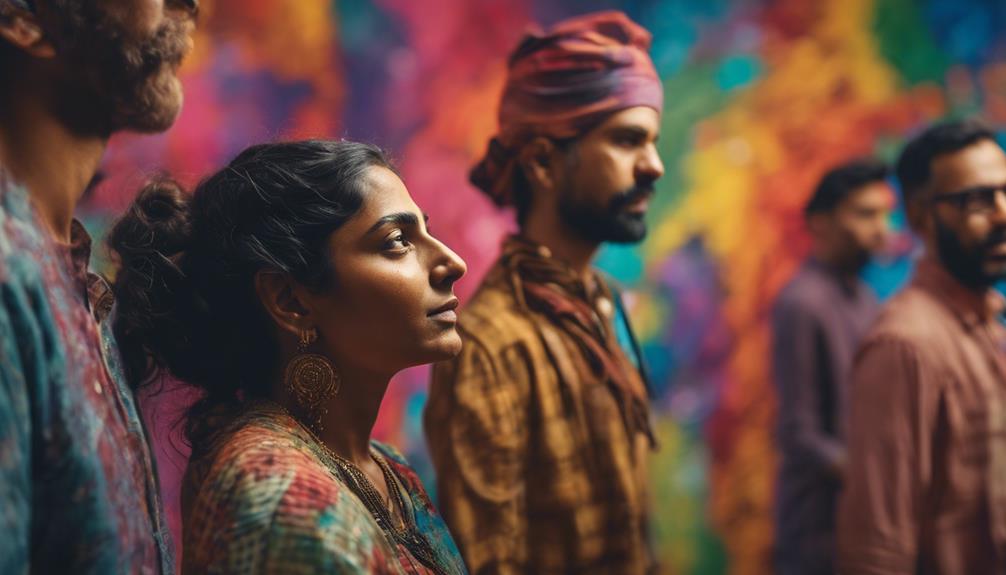
The collaboration among Indian artists revolutionized the country's art scene, challenging traditional norms and embracing global influences. The Progressive Artists Group (PAG) was pivotal in reshaping the art world by defying Orientalist stereotypes and incorporating modernist European styles into Indian art. Their interactions with Western ideas not only sparked a new radical era in Indian art but also had a profound impact on global art trends, showcasing the group's innovative approach to artistic expression.
In a similar vein, the Kerala Radicals, through the formation of the Indian Radical Painters and Sculptors Association, critiqued commercialization and traditional art forms, signaling a shift towards addressing political and community issues within the art world. While PAG focused on aesthetics, the Radicals explored social commentary, underscoring the diverse approaches taken by Indian artists to challenge conventions and make a lasting mark on the art landscape.
The struggles faced by the Radical Group in gaining recognition further emphasize the challenges encountered by artists breaking away from conventional norms in pursuit of artistic innovation.
Frequently Asked Questions
What Is Emily Carr Best Known For?
Emily Carr is best known for her innovative and bold approach to capturing the landscapes and Indigenous cultures of British Columbia. She was a key figure in the Canadian art scene, blending elements of Post-Impressionism and Fauvism in her unique style inspired by the forests and totem poles of the Pacific Northwest.
Carr's iconic paintings, such as 'Big Raven' and 'Scorned as Timber, Beloved of the Sky,' reflect her deep connection to nature and Indigenous spirituality.
Who Are the Progressive Art Groups in India?
The Progressive Artists Group (PAG) in India, consisting of influential artists like Francis Newton Souza, S.H. Raza, and M.F. Husain, challenged Orientalist stereotypes and embraced modernist European trends.
Their annual exhibitions at the Artists Centre in Mumbai showcased bold and revolutionary artworks, marking a radical departure from traditional Indian art forms.
PAG played a significant role in shaping the narrative of modern Indian art history post-Independence.
Who Is the Most Famous Indian Artist?
The most famous Indian artist is M.F. Husain, renowned for his versatile artistic expressions depicting Indian mythology and culture. Born in 1915 in Pandarpur, Husain, a self-taught painter nicknamed the 'Picasso of India,' explored religious epics like the Ramayana and Mahabharata.
His pioneering artistry, unique style, and diverse themes have earned him global recognition, solidifying his place as an iconic figure in Indian art history.
Who Brought the Art Movement to India?
The art movement in India was primarily brought by the Progressive Artists Group (PAG). Founded in 1947, artists like F.N. Souza, S.H. Raza, and M.F. Husain challenged traditional norms, embracing modernist European influences.
PAG's aim was to create a new artistic language by blending Western modernism with Indian themes. Their exhibitions at Mumbai's Artists Centre were pivotal, showcasing avant-garde artworks that influenced contemporary Indian art, shifting towards modernism and global interactions.
Conclusion
In the tapestry of Indian art, these rebellious artists are the threads that have woven a rich and vibrant legacy, challenging norms and pushing boundaries. Their works defy conventional labels and continue to inspire generations to come, proving that art has the power to transcend time and culture.
Like a phoenix rising from the ashes, these artists have reshaped the landscape of Indian art forever, leaving an indelible mark on the canvas of history.



